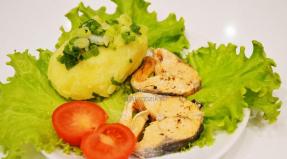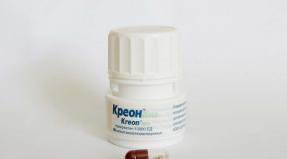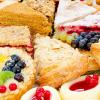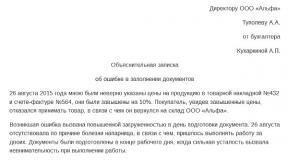Type 2 diabetes mellitus - how to prevent and prevent the development of the disease?
Type 2 is a serious chronic pathology of the endocrine system, which requires constant monitoring by the doctor and the patient, since the lack of treatment can lead to a heart attack and other disorders of the cardiovascular system.
Description of the disease
Experts identify the following symptoms of pathology:
- Itching and skin infections.
- Slow wound healing.
- Visual impairment.
- Drowsiness and fatigue.
- Increased feeling of thirst.
This disease begins in people in adulthood. Often it is caused by malnutrition. Also, factors in the development of diabetes can be:
- obesity;
- ethnicity (according to studies, Asians, Hispanics, African Americans and Native Americans suffer from this disease more often, representatives of other races weeks);
- genetic predisposition;
- passive lifestyle;
- high blood pressure.
Because most people with diabetes are overweight, doctors prescribe a weight loss and prevention diet. The daily calorie intake for women should not exceed 1200 kcal, for men - 1600 kcal. At the beginning of the treatment of type 2 diabetes mellitus, aerobic exercise is recommended. These include walking and swimming in the pool. In the future, you can increase physical activity in order to quickly normalize body weight.
What should be the food?
One of the important aspects of therapy is proper nutrition. A sample menu is compiled by a doctor depending on the type of disease. It should be noted that type 1 is characterized by an absolute decrease in insulin, while in type 2 there is a partial lack of the hormone, which leads to disruption of metabolic processes.
Each patient must adhere to the following rules:
- Reduce calorie intake.
- Eat at least 5 meals a day, but in small portions.
- To normalize digestion and improve metabolic processes, meals should be at the same time.
- Exclude fatty, smoked, salty and spicy foods from the diet.
- Use a sweetener instead of sugar.
- Reduce the amount of fats, while the number of proteins entering the body should remain the same.
- Food is allowed to be boiled, steamed or baked.
- Sweets should only be consumed during breakfast or lunch, as snacking on sweets can lead to a sharp increase in blood glucose.
- Limit your salt intake.
- Stop drinking strong black tea, coffee and alcoholic beverages.
- Avoid carbonated drinks and packaged juices.
For diabetics, fasting and long breaks between meals are strictly prohibited. Dinner should be no later than 2 hours before going to bed. Dishes should not be too hot or too cold.
To correctly compose the menu, you need to know which table is intended for patients with type 2 diabetes, and which foods should be excluded from the diet forever.
Important! When compiling the menu, the doctor focuses on the glycemic index - the degree of impact of products on blood sugar levels. The higher the glycemic index, the faster the level of glucose in the lymph after eating, which has negative consequences for human health.
Patients with type 2 diabetes should not eat the following high glycemic foods:
- canned sweet corn;
- beet;
- cakes based on biscuit;
- hamburgers;
- pasta;
- shortbread;
- black bread;
- Orange juice;
- melon and bananas;
- semolina and oatmeal;
- canned pineapple and other fruits;
- milk chocolate;
- semi-finished products;
- marmalade with an abundance of sugar;
- jam;
- condensed milk;
- yogurt and cottage cheese with a high percentage of fat content;
- lard, pork;
- marinades, spices and mayonnaise.
The diet should consist of the following products:
- zucchini;
- onion and garlic;
- fresh fruits;
- marmalade and jam without sugar;
- milk, cottage cheese and kefir with a low percentage of fat content;
- dried fruits;
- peanuts and nuts;
- black chocolate;
- barley porridge;
- white beans;
- juices, compotes and herbal teas without sugar;
- Orange fresh.
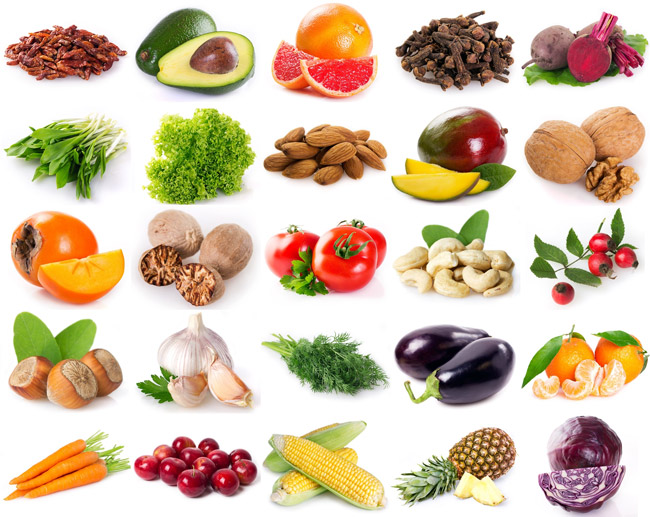 Proper nutrition is important for diabetics
Proper nutrition is important for diabetics The following foods have an average glycemic index:
- canned peas;
- colored beans;
- bran bread;
- pineapple natural juice;
- grape natural juice;
- brown rice;
- buckwheat grain;
- kiwi and mango;
- sweet yogurt;
- oatmeal cookies;
- sweet berries.
In some cases, nutritionists allow the introduction of certain foods from the prohibited list into the diet, but the consumption of other dishes should be reduced.
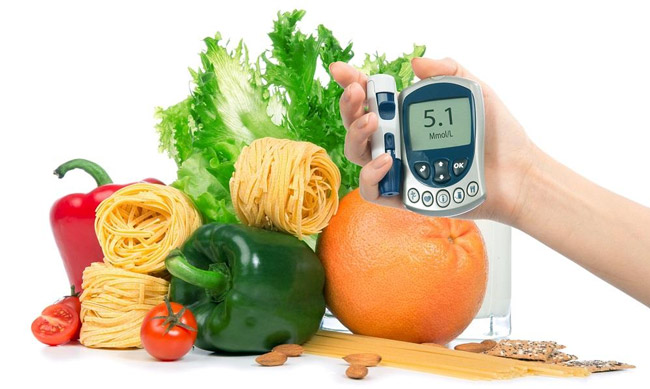
What should not be consumed by patients with type 2 diabetes:
- fried potatoes and chips;
- popcorn;
- salted cheese;
- fish and meat of fatty varieties;
- sausages;
- halva;
- sweet products made from white flour;
- kvass;
- cakes and pastries;
- jam;
- rice porrige;
- cracker;
- muesli.
You can make a menu for the week yourself, using the table of products that are allowed for illness.
What products does the approximate menu of diet number 9 consist of?
Diet No. 9 is prescribed to patients during inpatient treatment. It was developed by the famous Soviet scientist M. Pevzner. During the diet, you can not eat foods with a high glycemic index.
Monday
- breakfast - buckwheat porridge, salad from and, natural apple juice;
- snack - fresh carrot salad;
- lunch - chicken cutlet, broccoli stew and herbal tea;
- afternoon snack - unsalted cheese and 200 ml of kefir;
- dinner - baked zucchini with minced chicken, compote.
At night, it is allowed to drink low-fat kefir.
Tuesday
- breakfast - oatmeal, steamed fish cake, green tea;
- snack - cottage cheese with berries;
- lunch - stewed rabbit, stewed eggplant, pear juice;
- afternoon snack - baked apples with raisins and dried apricots;
- dinner - peppers stuffed with vegetables;
At night, you can drink a glass of natural bio-yogurt.
Wednesday
- breakfast - steamed omelet, a slice of whole grain bread, pear compote without sugar;
- snack - natural low-fat yogurt;
- lunch - boiled veal, zucchini for garnish, green tea;
- afternoon snack - cottage cheese with milk;
- dinner - buckwheat porridge with stewed carrots.
At night, you can drink ryazhenka.
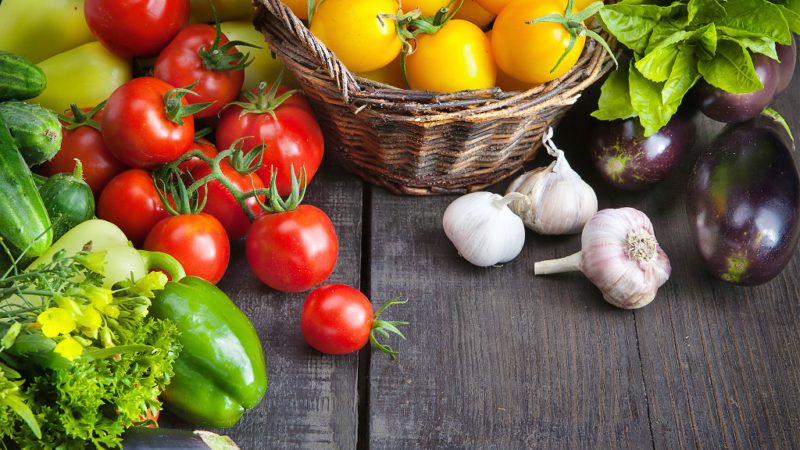
Thursday
- breakfast - soft-boiled, green tea;
- snack - steamed vegetables with hummus;
- lunch - vegetarian soup, chicken cutlet with;
- snack - squash caviar;
- dinner - stewed broccoli with mushrooms.
Friday
- breakfast - buckwheat porridge, apple juice and soy bread;
- snack - a glass of kefir;
- lunch - boiled chicken with jacket potatoes, green tea;
- afternoon snack - low-fat cottage cheese with berries;
- dinner - fish meatballs with steamed asparagus beans.
Saturday
- breakfast - 2 slices of whole grain bread, low-fat cheese, orange juice;
- snack - vegetable stew;
- lunch - soup with beef meatballs;
- afternoon snack - fresh berries with the addition of low-fat milk;
- dinner - quail omelette with baked red onions.
At night, you can drink yogurt without additives.
Sunday
- breakfast - cottage cheese, berry fresh;
- snack - fruit salad with nuts, dietary bread;
- lunch - boiled beef with cheese, green pea puree, chamomile tea;
- afternoon snack - watermelon;
- dinner - pike perch fillet with vegetables.
Sweeteners
The most common sugar replacement options are:
- stevia;
- fructose.
Stevia is a supplement made from the extract of the perennial stevia plant that is calorie-free and has a sweet taste that is 20 times sweeter than regular sugar. One of the benefits of stevia is its ability to restore the activity of the pancreas and participate in the production of its own insulin, without in any way affecting blood sugar levels.
Stevia comes in several forms:
- effervescent tablets in a dispenser;
- crystalline powder that looks like sugar;
- liquid syrup.
Currently, on the shelves of stores you can find various drinks with the addition of stevia. For example, ready-made chicory with stevia, which can replace coffee.
The composition of natural bee includes fructose, sucrose and glucose. It contains many vitamins and minerals, so it is useful to use it to increase. With diabetes, the allowable rate of honey per day is 1-2 tsp. after eating.
In type 2 diabetes, doctors recommend eating low-fructose foods. If more than 90 g of fructose per day enters the body, then an increase in the level of uric acid is possible. In 2003, nutritionists removed fructose from the list of sweeteners and named fructose as an analogue of sugar.
There are also synthetic sweeteners. These include the following:
- Aspartame;
- acesulfame potassium;
- sodium cyclamate.
Each of these artificial sweeteners has a number of contraindications. Aspartame is not recommended for use in patients with impaired amino acid metabolism. Acesulfame potassium should not be used by people with. Patients with kidney disease are strictly prohibited from sodium cyclamate.
Note! Artificial sweeteners are not recommended by endocrinologists due to side effects and other risks.
watermelon for type 2 diabetes
- proteins;
- pectin;
- phosphorus;
- vitamins E and C;
- folic acid and others.
For people with diabetes, watermelon is useful because it contains much less carbohydrates than oranges, apples or green peas. The daily norm of watermelon is 700 g.
Treatment of diabetes with folk remedies

Alternative treatment is very common among patients. One of the popular remedies is an infusion based on lemon peel, parsley and garlic. The recipe for the infusion belongs to the healer Lyudmila Kim. It looks like this:
- Take 1 kg of lemons and peel them.
- Wash 300 g of parsley roots.
- Peel 300 g of garlic.
- Mix all the ingredients and grind with a meat grinder.
- Transfer the resulting mixture to a jar and leave for 14 days.
Take 15 g before each meal.
To stimulate the production of insulin, an effective remedy, according to many patient reviews, is a tincture based on onions, walnut leaves and cuff grass. To prepare it, you need:
- Grind 40 g of onion to a porridge-like consistency and pour 250 ml of vodka.
- Leave the mixture in a dark place for 5 days, strain.
- Grind 40 g of walnut leaves and add 250 ml of vodka.
- Keep the mixture for 7 days in a dark place, then strain.
- Grind 40 g of cuff grass and pour 250 ml of vodka.
- Infuse the mixture for 7 days, then strain.
To obtain the final healing agent, mix 150 ml of the first tincture with 60 ml of the second and 40 ml of the third. Use it 30 ml half an hour before breakfast and dinner.
In addition to a variety of drugs prescribed by the attending physician, patients are advised to use propolis. A single serving should be no more than 4 g. It is enough to chew a piece of propolis 1.5 hours before a meal. You need to eat no more than 15 g per day.
To reduce the amount of glucose in the blood and speed up metabolism, you can use chicken or quail eggs with lemon. To prepare a miracle remedy, you should squeeze the juice from half a lemon and mix it with 1 egg. Use the resulting mixture for 3 days, 200 g before meals. Then you need to take a break and repeat the reception. The course of treatment is 3 months.
Disease prevention
Do not despair if you or someone close to you falls under the risk group. Thanks to modern methods of prevention, you can continue to lead a normal life and minimize the risk of developing the disease and its complications.
So, the most important components of prevention are:
- Proper nutrition. This item implies the use of as few carbohydrates as possible (so that the pancreas is not overloaded) and high-calorie foods. To avoid diabetes or its development, easily digestible carbohydrates should be excluded (first of all, it is sugar and any products that contain it - sweets, chocolate, cookies, unnatural juices). The basis of the diet should be products with vegetable fibers, complex carbohydrates. It is best to consume poultry, vegetables, lean fish, unsweetened juices. Very carefully, in small quantities, you can consume spices, smoked, spicy dishes, pasta and flour products.
- Physical activity every day. At least half an hour a day it is necessary to engage in physical education - this helps to improve metabolic processes, due to which fats are better broken down, body weight is noticeably reduced. Make it a rule to walk or ride a bike every day. Even better is swimming, dancing, football, etc.
- Maintaining mental balance. Stress only provokes and contributes to the development of the disease. Since frequent stress provokes the development of the disease, the prevention of diabetes necessarily includes control over the emotional state. Control emotions. Try to avoid communicating with negative people, avoid stressful situations. If you have a nervous, stressful job, it might be worth giving up and finding another job to keep yourself healthy.
- Regular medical examination. If you are at risk, at least every six months you need to take tests to prevent the development of the disease and take action in time.

